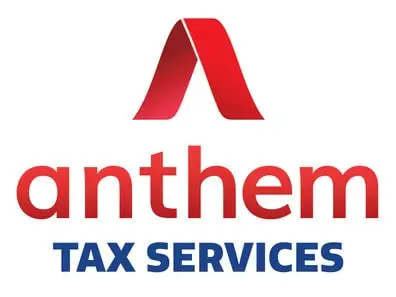
In these times of unprecedented financial strain, it is more important than ever to know what support is available and when to utilize it.
As the economic strain continues to place pressure on businesses and individuals alike, IRS financial hardship is becoming more highly in-demand.
The IRS determines financial hardship as being when an individual cannot pay their allowable living expenses. Those who meet the requirements are eligible for reduced tax payments or a halt in debt collection.
These procedures were introduced by the IRS Hardship program and aimed to alleviate the suffering of those placed under extreme financial strain.
Allowable living expenses.
It is important to outline what is categorized as allowable living expenses in the eyes of the IRS, which are listed below:
- Food
- Housekeeping supplies
- Personal care products
- Miscellaneous
- Goods & Services
“Allowable living expenses include those expenses that meet the necessary expense test.” – IRS Collection Financial Standards.
The necessary expense test measures what is necessary for that individual and, therefore, what amount is required to help cover these costs. It aims to support that person’s welfare and anyone who may be dependent on them, such as family members.
National Standards.
Collection Financial Standards will be used to determine a taxpayer’s ability to pay these essential costs. There is a minimum amount based on National Standards, which supports that person and their dependents. Typically, those seen as dependents should be listed on the most recent year’s income tax return.
National Standards are calculated using the Bureau of Labor Statistics Consumer Expenditure Survey. This compiles the spending habits of American citizens generally, estimating realistic costs required.
If national and local expense standards are still not ample, it’s necessary to provide documentation detailing this. Minimum standards vary by location, while the national standards for food, clothing, and other essential items remain the same.
As the National Standards are subject to change over time and dependent on location, it’s best to regularly check the IRS allowable expenses.
2020 Allowable Living Expenses National Standards:
| Expense | One Person | Two Persons | Three Persons | Four Persons |
| Food | $385 | $715 | $779 | $947 |
| Housekeeping supplies | $45 | $67 | $73 | $71 |
| Apparel & Services | $85 | $158 | $192 | $251 |
| Personal care products | $43 | $73 | $74 | $88 |
| Miscellaneous | $157 | $285 | $315 | $383 |
| Total | $715 | $1,298 | $1,433 | $1,740 |
Can I file a hardship with the IRS?
If you cannot cover the costs for your basic needs, such as those listed above, you can file a hardship with the IRS.
To meet the minimum requirements, it’s essential to provide the necessary documentation. Keep detailed records of your finances and ensure that you provide the IRS with evidence that your basic needs are not covered.
IRS Financial hardship is granted on the basis that:
- The amount is no more than what’s necessary to cover essential costs
- There is an immediate and heavy financial need
In addition to the other basic needs covered, financial hardship is also considered for medical needs. If you are at risk in some way, whether it be medical or unable to pay other living expenses (such as the risk of being evicted), the program can offer support. The written program will be tailored towards each individual depending on their specific needs.
Another point to bear in mind when knowing if you are eligible is whether there are other reasonable forms of support. The IRS will not deem a person needing financial hardship if their needs can be met by other means such as liquidation of assets, insurance, or commercial sources.
IRS Financial Hardship is granted both to those employed by a corporation or those who are self-employed. Employers will apply for financial hardship on behalf of an employee if they are deemed to meet the necessary requirements. The employer must maintain that the individual has explored other options before putting them forward for financial hardship.
If you are experiencing financial hardship, the next step is filling out the necessary form.
- Form 433A or 433F – the form required for self-employed individuals in need of IRS Financial Hardship Status
- Form 33B – the form required for corporations to collect the necessary information regarding the employee in need
What happens next?
There are a number of different resolutions available under the IRS Financial Hardship scheme. The type of tax relief received depends on income, personal costs and other factors collected on the form.
Two of the most common types of Tax Debt resolution are Offer in Compromise (OIC) and Partial Pay in Installment (PPIA).
- Offer In Compromise is an agreement between the taxpayer and IRS wherein a reduced tax debt is decided
- PPIA allows the taxpayer to have reduced monthly tax payments until the point of tax liability expiry
Most resolution options include a payment plan that spans over a certain time period or spans over an indefinite period but with reduced payments. If taxpayers are in a position to pay it back in full, it is usually agreed to pay back this amount within six years.
If you are completely unable to pay back your taxes even with a reduction or payment plan, you will receive the ‘Currently Non-Collectable‘ status (15.6.1).
IRS Financial Hardship means that you will not amass further debt or risk your property and goods being seized. CNC status puts a temporary halt on your tax payments to relieve this financial strain until you can be financially independent again.
CNC status can last for up to ten years, depending on the individual circumstances. If the tax is not paid back after ten years, it will be wiped. IRS will routinely check each person’s financial situation every two years to ensure that they are still eligible for support.
If your income increases, it is best to let IRS know as soon as possible. They will then determine whether or not the financial support is still necessary for you.
In terms of making payments while in financial hardship, it is advised to pay back your taxes little and often.
In these times of unprecedented financial strain, it is more important than ever to know what support is available and when to utilize it.
As the economic strain continues to place pressure on businesses and individuals alike, IRS financial hardship is becoming more highly in-demand.
The IRS determines financial hardship as being when an individual cannot pay their allowable living expenses. Those who meet the requirements are eligible for reduced tax payments or a halt in debt collection.
These procedures were introduced by the IRS Hardship program and aimed to alleviate the suffering of those placed under extreme financial strain.
Allowable living expenses.
It is important to outline what is categorized as allowable living expenses in the eyes of the IRS, which are listed below:
- Food
- Housekeeping supplies
- Personal care products
- Miscellaneous
- Goods & Services
“Allowable living expenses include those expenses that meet the necessary expense test.” – IRS Collection Financial Standards.
The necessary expense test measures what is necessary for that individual and, therefore, what amount is required to help cover these costs. It aims to support that person’s welfare and anyone who may be dependent on them, such as family members.
National Standards.
Collection Financial Standards will be used to determine a taxpayer’s ability to pay these essential costs. There is a minimum amount based on National Standards, which supports that person and their dependents. Typically, those seen as dependents should be listed on the most recent year’s income tax return.
National Standards are calculated using the Bureau of Labor Statistics Consumer Expenditure Survey. This compiles the spending habits of American citizens generally, estimating realistic costs required.
If national and local expense standards are still not ample, it’s necessary to provide documentation detailing this. Minimum standards vary by location, while the national standards for food, clothing, and other essential items remain the same.
As the National Standards are subject to change over time and dependent on location, it’s best to regularly check the IRS allowable expenses.
2020 Allowable Living Expenses National Standards:
| Expense | One Person | Two Persons | Three Persons | Four Persons |
| Food | $385 | $715 | $779 | $947 |
| Housekeeping supplies | $45 | $67 | $73 | $71 |
| Apparel & Services | $85 | $158 | $192 | $251 |
| Personal care products | $43 | $73 | $74 | $88 |
| Miscellaneous | $157 | $285 | $315 | $383 |
| Total | $715 | $1,298 | $1,433 | $1,740 |
Can I file a hardship with the IRS?
If you cannot cover the costs for your basic needs, such as those listed above, you can file a hardship with the IRS.
To meet the minimum requirements, it’s essential to provide the necessary documentation. Keep detailed records of your finances and ensure that you provide the IRS with evidence that your basic needs are not covered.
IRS Financial hardship is granted on the basis that:
- The amount is no more than what’s necessary to cover essential costs
- There is an immediate and heavy financial need
In addition to the other basic needs covered, financial hardship is also considered for medical needs. If you are at risk in some way, whether it be medical or unable to pay other living expenses (such as the risk of being evicted), the program can offer support. The written program will be tailored towards each individual depending on their specific needs.
Another point to bear in mind when knowing if you are eligible is whether there are other reasonable forms of support. The IRS will not deem a person needing financial hardship if their needs can be met by other means such as liquidation of assets, insurance, or commercial sources.
IRS Financial Hardship is granted both to those employed by a corporation or those who are self-employed. Employers will apply for financial hardship on behalf of an employee if they are deemed to meet the necessary requirements. The employer must maintain that the individual has explored other options before putting them forward for financial hardship.
If you are experiencing financial hardship, the next step is filling out the necessary form.
- Form 433A or 433F – the form required for self-employed individuals in need of IRS Financial Hardship Status
- Form 33B – the form required for corporations to collect the necessary information regarding the employee in need
What happens next?
There are a number of different resolutions available under the IRS Financial Hardship scheme. The type of tax relief received depends on income, personal costs and other factors collected on the form.
Two of the most common types of Tax Debt resolution are Offer in Compromise (OIC) and Partial Pay in Installment (PPIA).
- Offer In Compromise is an agreement between the taxpayer and IRS wherein a reduced tax debt is decided
- PPIA allows the taxpayer to have reduced monthly tax payments until the point of tax liability expiry
Most resolution options include a payment plan that spans over a certain time period or spans over an indefinite period but with reduced payments. If taxpayers are in a position to pay it back in full, it is usually agreed to pay back this amount within six years.
If you are completely unable to pay back your taxes even with a reduction or payment plan, you will receive the ‘Currently Non-Collectable‘ status (15.6.1).
IRS Financial Hardship means that you will not amass further debt or risk your property and goods being seized. CNC status puts a temporary halt on your tax payments to relieve this financial strain until you can be financially independent again.
CNC status can last for up to ten years, depending on the individual circumstances. If the tax is not paid back after ten years, it will be wiped. IRS will routinely check each person’s financial situation every two years to ensure that they are still eligible for support.
If your income increases, it is best to let IRS know as soon as possible. They will then determine whether or not the financial support is still necessary for you.
In terms of making payments while in financial hardship, it is advised to pay back your taxes little and often.


